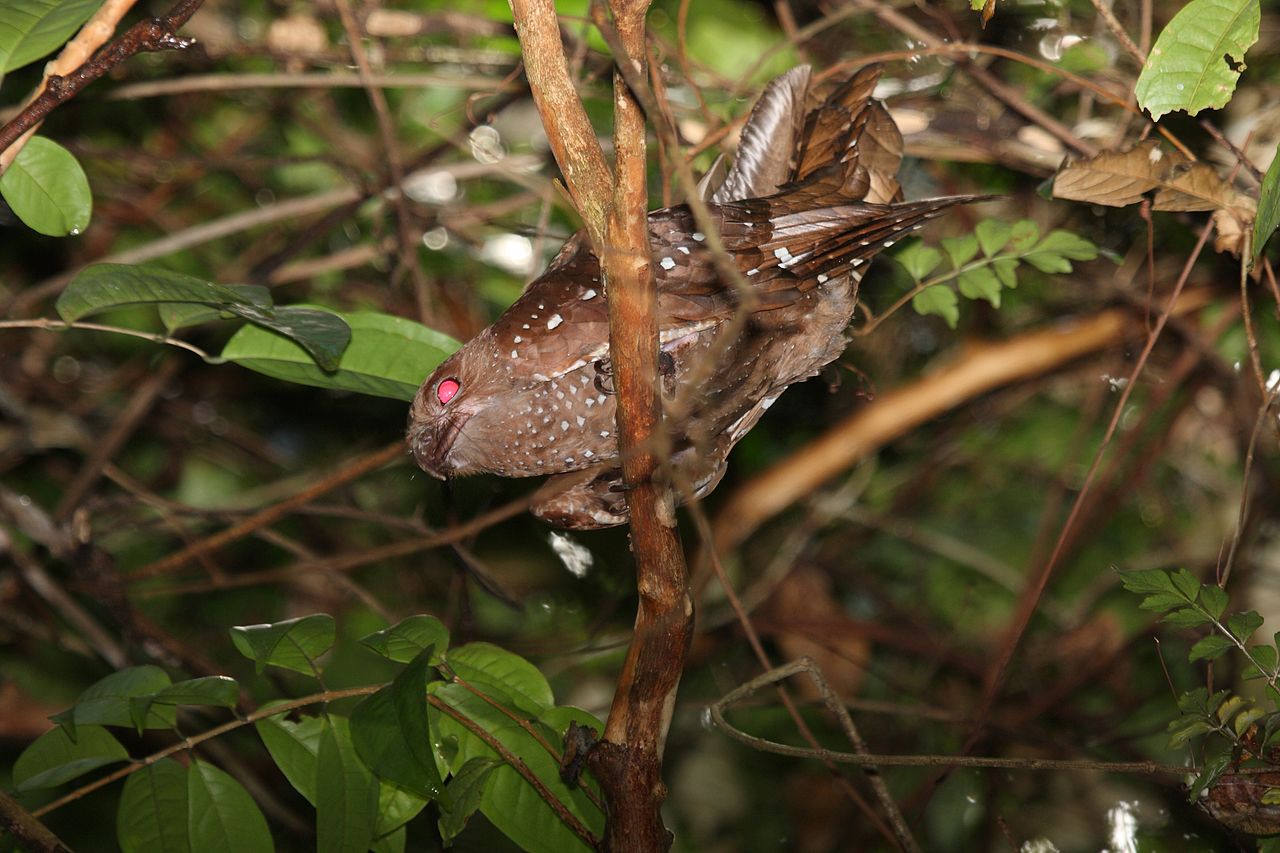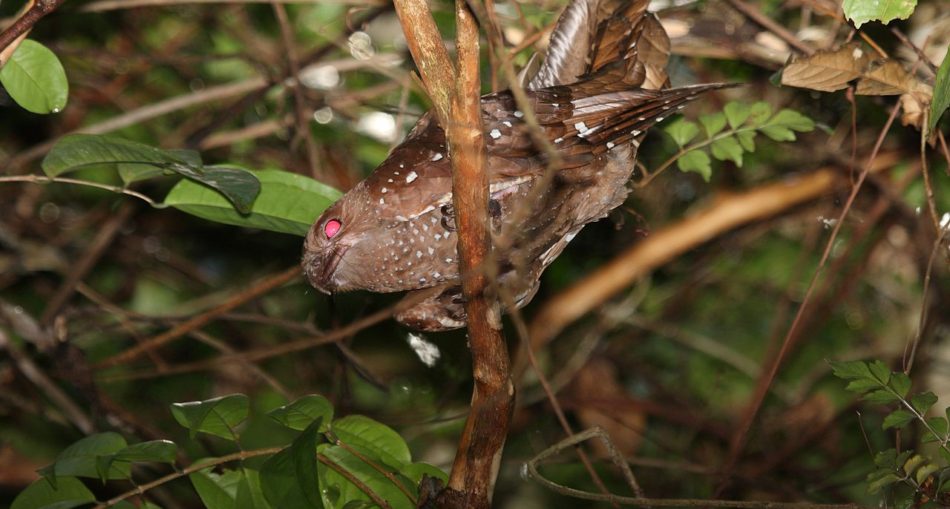The simplest depiction of a low-light-level lifestyle among flying birds is by the cave-dwelling Oilbirds (Steatornis caripensis), who are usually mistaken for bats. The species was named Oilbirds because as chicks, they are very chubby that the indigenous people gathered them and cooked them down to an oil. Their bodies are entirely rufous-brown with the exception of small white spots on the wings, tail, and body.
The Oilbirds are also known as guácharo or tayo in Spanish – both terms being of indigenous origin. These birds are relatives of the nightjars and are usually placed in the order of Caprimulgiformes. The Oilbirds often grows between forty (40) to forty-nine (49) centimetres with a wingspan of ninety-five centimetres. It also weighs three hundred fifty (350) to four hundred and seventy-five (475) grams. As you continue reading, you will find out more about this uncanny nocturnal bird.

The Oilbird – Photo By Dominic Sherony – Oilbird (Steatornis caripensis), CC BY-SA 2.0, https://commons.wikimedia.org/w/index.php?curid=14885524
Description of the Oilbird
The plumage of the Oilbird is predominantly a reddish-brown colour. While it has white spots on the cervix and wings, the lower parts are cinnamon-buff with white diamond-shaped spots edged in black. These spots start small towards the oesophagus and get larger towards the back. The stiff tailpiece fins are a rich brown spotted with white on both sides. Oilbirds have small feet and are practically useless, with the exception of clinging to vertical surfaces. The eyes of oilbirds are astonishing well-adapted to nocturnal foraging. While their eyes are small, pupils are proportionately large, thus allowing for the highest light-gathering capacity of any known bird.
- Male Oilbird – The male Oilbird is greyer and slightly larger than the female, weighing more and having longer wingspans.
- Female Oilbird – The females are usually the smallest Oilbird, who is duller.
Scientific Classification of the Oilbird
- Kingdom: Animalia
- Phylum: Chordata
- Class: Aves
- Order: Caprimulgiformes
- Family: Phoenicopteridae
- Genus: Steatornis
- Species: S. caripensis
Habitat of the Oilbird
The Oilbird is native to Guyana but can be found in countries like Trinidad, Venezuela, Colombia, Ecuador, Peru, Bolivia, and Brazil. They range from sea-level to three thousand, four hundred (3,400) meters. The species has highly selective habitat as it needs both caves to breed in and roost as well as near a forest containing fruiting trees. Where there are no appropirate caves, oilbirds usually roost and reproduce in narrow gorges and grottos with suitable rock shelves.
Diet of the Oilbird
The Oilbird is a frugivore or fruiteater who like to eat the fatty, wax palm, and avocado fruits which they pick from trees with their formidable-looking hooked bills. The Oilbirds are liable for establishing new fruit trees far and wide as they excrete the seeds they swallow, often at a goodly distance from the host tree.
Behaviour & Lifestyle of the Oilbird
The Oilbirds are very night-loving. During the day, the birds rest on cave trails and leave at night to find fruit outside the cave, usually on a farm. It was once believed that oilbirds only roosted in caves, and indeed never saw daylight, but studies shown that the non-breeding birds roosted in caves or other rock shelters one-third (1/3) of the time and spent the rest roosting in trees. Oilbirds living in large numbers in these caves, coming out in search of food during the night,
Reproduction of the Oilbird
A mated pair of oilbirds usually lay two to four (2-4) glossy eggs in their cave. After hatching, the chick would generally remain in the nest for approximately one hundred twenty (120) days. Parents feed them by regurgitation until they are heavier than their parents.
The Oilbird in Guyana
The Oilbird is a very unusual bird here in Guyana and supposedly never sees the light of day. They roost in considerably large numbers in caves during the day and forage at night, for food with a high favour of the fatty wax palms. They would also bring back fruits and because of this a significant number of seeds from the fruit they feed on, accumulate on the floor of the cave. The next time you’re in our forest at night, be sure to see if you can spot an Oilbird.
Articles References
- https://en.wikipedia.org/wiki/Oilbird
- https://abcbirds.org/bird/oilbird/
- https://asknature.org/strategy/echolocation-enables-navigation-in-total-darkness/







